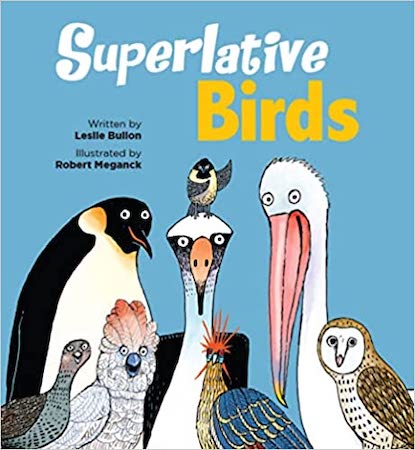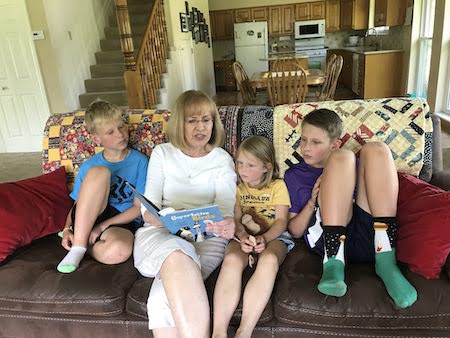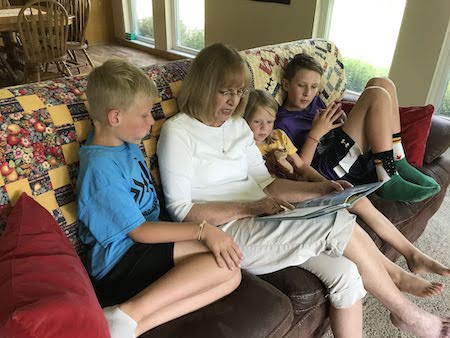(Note: I was given a copy of this book but all opinions are my own.)
Birds.
Scientific information about birds.
Illustrations of birds.
Poetry about birds.
All of those things are in the book Superlative Birds by Leslie Bulion.
I know, I know. That sounds like an odd combination of things to put in book. But it isn’t. Not at all.
In fact, Superlative Birds is a superlative book! (Superlative is an adjective that means of the highest quality or degree, words usually ending in -est such as biggest, prettiest, coldest.)
So this is one of the best books about the most notable birds in the world. Trust me.
Let me share a few tidbits that you’ll find in this book.
The emperor penguin preens himself before returning home after hunting for fish. Preening traps air in the penguin’s layer of downy feathers. When it dives into the water, the penguin releases the trapped air as bubbles. Those bubbles enable the penguin to blast through the water at twice its swimming speed.
The tinamou bird lays iridescent green, dark purple, or turquoise eggs.
The timberdoodle bird has eyes on top of its head. It can see in a full circle without moving its head. (Timberdoodle is the nickname for the American woodcock.)
Then there’s the bird whose farts smell like cow manure. Yuck!
And the bird that migrates from the Arctic to the Antarctic and back to the Arctic traveling over 50,000 miles.
And the bird that builds a nest that is 28 feet tall and 167 feet wide. (That’s a distance from a football goal post to a little beyond the middle line on the football field.) That’s a humongous nest!
As you can see, my grandkids were enthralled with the book — even my six-year-old granddaughter. (I was too.) Yes, there’s lots of scientific information. But it is written in a compelling way. There’s just enough facts to make the reading interesting yet it’s fun to read at the same time. It’s not at all like a dry or boring textbook.
Now a word about the poetry.
Each poem uses a different form or style. For example, Bulion used the four-line tendi, a form used in Swahili poetry, for the poem about the quelea The quelea lives in sub-Saharan Africa. The type of poem matches where the bird lives.
Bulion used a Spanish poetry form for the jacana which lives in Spanish-speaking regions.
You can sing the poem about the lyrebird to the tune of Waltzing Matilda. The lyrebird lives in Australia and Waltzing Matilda is an Australian bush ballad.
Also, sometimes the shape of the poem fits the shape of the bird and sometimes the cadence of a poem reflects the bird’s movements.
At the end of the book, there is a glossary, a section about the different poetry forms that were used, and resources for more information. They are really helpful!
And then there are the illustrations by Robert Meganck. They are anatomically correct yet have a dash of whimsy. It’s as if the birds have personalities. My favorite is the hoatzin. It looks wild-eyed and zany.
There are other fun things in the illustrations — like a skunk holding its nose and a startled bunny.
I give this book 2 thumbs up. Great job Leslie and Robert!
This book is for children ages 8 to 12. (But I bet even kids that are older would enjoy it.) You can get a hard-bound copy on Amazon for $15.95.








One thought on “Awesome Book About Birds”
Reading books in English to children is not just about language learning; it’s a gateway to global culture, enhancing vocabulary, and nurturing a lifelong love for storytelling and diverse perspectives.